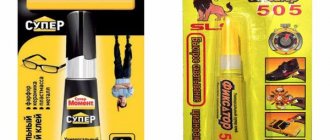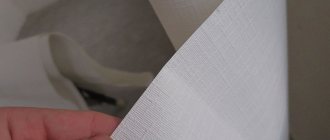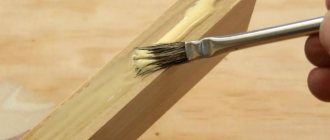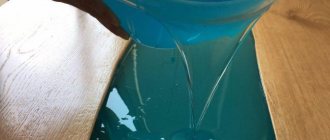Why doesn't the slime thicken, and how can I make it thicken?
The following explains what to do if the slime does not thicken for a long time, and explains why this happens:
- Add more thickener if there is not enough thickener in the composition.
- Buy new glue as this one is probably past its expiration date. Therefore, if the activator did not help, perhaps the reason is in the glue.
- Add more glue and thickener if the mixture is too runny.
- Place the mixture in the refrigerator for half an hour. It should be placed away from food.
- Stir the mixture a few more times.
We recommend: Is slime safe for children, review of a current issue
It is impossible to make any slime without a thickener, so it is added to the toy in one form or another. Any available means are suitable as an activator, including starch, sugar and gelatin.
The thickener is gradually combined with the main components (until thickening), as a result of which the slime takes on shape, volume and elasticity. But, the main thing in this matter is not to overdo it with the activator, because the slime will lose its ductility and quickly become unusable.
How can you thicken slime at home?
To make the slime more viscous and thick, you can also use improvised materials that are available in every home as thickeners, this list includes such as:
- sugar;
- gelatin;
- starch;
- soda, etc.
Boric acid
Boric acid has a powerful thickening effect, and at the same time it is used sparingly (one packet of powder is enough for several slimes). The product is affordable and is also sold in any hardware store or pharmacy. When making slime, boric acid is mixed with PVA glue (the proportions should be clarified in the recipe), and also diluted with water, which gives the toy additional volume.
But this activator has several disadvantages:
- Causes nausea, shortness of breath and peeling of the skin (especially in children).
- Not compatible with every glue.
- In some cases, it requires additional thickeners (laundry soap, baking soda, etc.).
Proportions for activator:
- PVC (100 g);
- office glue (200 g);
- boric acid (1 tbsp);
- food coloring and shaving foam.
Gelatin
Gelatin quickly turns a shapeless mass into a dense and elastic toy. The product does not cause allergies and is safe for children. Most often it is mixed with plasticine and water.
Approximate proportions:
- 15 g edible gelatin;
- 200 ml water;
- a block of plasticine weighing 100 g.
Important. Before use, gelatin must first be soaked in warm water and allowed to brew for 40 minutes.
This activator is suitable for slimes made from plasticine. The slime made from these ingredients is less stretchy and has a jelly-like consistency, but it does not require any components other than plasticine and gelatin. Before preparing the toy, gelatin must be soaked in water for 40 minutes.
Borax
Borax is the sodium salt of boric acid and can also be used to thicken slime. Borax powder is sold in pharmacies or online stores. Its properties do not differ from sodium tetraborate, however, it is available in powder form.
You need to wear gloves when handling the powder, as it can burn your skin. Children should knead slime using Borax under the supervision of parents or other adults.
Borax is usually used in combination with water, baking soda and PVA glue. To add brightness and color, food coloring is added to the toy. Water and borax are mixed in a ratio of 12:1, soda is added in the amount of 1 tsp, and PVA glue is added “by eye” until the mass thickens. The dye is added last.
Attention! The main advantage of a slime made with Borax is that the color of the toy can be easily changed. To do this, just rinse it with water and rub in another dye.
Sugar
It is recommended to use powdered sugar as an activator for the slime, and not “sand” (so that there are no lumps and the toy is perfectly smooth). Shampoo and liquid soap are used as a basis. Powdered sugar is added in small quantities - no more than 1 tsp. or even less. After mixing the ingredients, the mass is put into the freezer for half an hour. But most often this thickener is added to edible slimes.
Starch
Potato or corn starch is used as a thickener; there is no difference. Here are its main advantages:
- Affordable price.
- Good thickening effect.
- No allergic reactions.
- Possibility of preparing edible slimes. In this case, instead of shampoo, condensed milk is added to the composition.
To make starch work faster and better, it is diluted with water in a 3:1 ratio. Instead of dry starch, you can use flour diluted with water. The mixture will be thick and doughy, but not elastic.
Liquid starch contains sodium tetraborate, which makes it suitable for activating slime. You can buy the product at any hardware store: it is usually found in the laundry detergent section. You can also order starch online; It is advisable to purchase starch from a company called Lint or Sta-flo.
We recommend: Types and composition of activators for slime. Where are they sold, how to make it yourself at home?
Soda
Along with salt and sodium tetraborate, baking soda interacts well with almost any component. It is used in the form of a powder or solution. The last option is quite simple to prepare: 3 parts of soda powder are mixed with 1 part of water. As a result, the slime acquires the necessary density and ductility.
Slimes activated with soda are called "handgum" or "hand gum" and have a slightly different consistency from regular slimes.
Sodium tetraborate
Sodium tetraborate interacts well with glue and is suitable for making any type of slime. Other advantages of this product:
- It is odorless and non-toxic.
- This slime activator is sold at any pharmacy where you can buy it without a prescription.
- It has a low cost.
- It is economically used (can be diluted with water).
Preparation:
- Dissolve PVA glue (100 ml) in 50 ml of warm water.
- Add sodium tetraborate (until thickened).
Attention! With frequent use, sodium tetraborate can cause health problems (nausea, dry skin, problems with the reproductive system, etc.). In this case, you can replace it and use a safer product than this activator.
Air freshener or hairspray
Hairspray is easily accessible - it is found in almost every home and is sold in all cosmetic stores (including supermarkets). But that's where its advantages end. Here are the disadvantages of hairspray when making slime:
- Doesn't always affect glue.
- It has a specific odor, which with prolonged interaction can cause mild nausea, shortness of breath and an allergic cough.
- In most cases, the toys are not of very high quality (sometimes the service life of the product is reduced).
- Used up very quickly.
Preparation of thickener:
- PVA glue and dye are mixed in a deep container.
- Gradually inject the varnish (each “spray” lasts at least 5 seconds).
- Mix the composition and add little by little to the still shapeless mass.
Without sodium tetraborate, you can thicken the slime using hairspray or air freshener. Both components must be in spray form; The varnish should have a high fixation force, and the air freshener should be from Air Wick. To prepare the slime, you need to use either varnish or a freshener: it is not recommended to use them at the same time.
As a result, you will get a slime that resembles plasticine in consistency. When kneading for the first time, the slime will not tear or stretch, but if you let it “rest” for a few minutes, the slime will become more elastic.
Dishwashing detergent or clothes washing gel
If you don't want to use caustic sodium tetraborate, use dishwashing liquid (a product called Fairy works best) or laundry gel. Only one of the components is allowed to be used in one recipe. A teaspoon of the product should be added to the slime during the preparation process, and then the slime should be allowed to “rest” for 20 minutes. Afterwards you will get a beautiful and pleasant to the touch slime, with a consistency reminiscent of chewing gum.
Reference! This component is not recommended for use by people with sensitive skin.
Hydrogen peroxide
You won't be able to thicken the slime with peroxide alone: you must also use baking soda or starch. When adding soda, the toy turns out to be more liquid, and when using starch, it becomes elastic, reminiscent of a bouncy ball. When making slime, add peroxide a few drops at a time until you reach the desired consistency. A large amount of peroxide will make the slime thin and watery.











